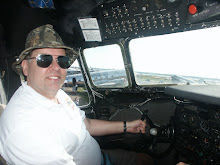
The Elecraft K2 has a number of unique features, one is the variable bandpass filter which can be programmed for different bandwidths. This leads to a very flexible design for CW or RTTY, but requires a bit of configuration work. For each mode, you can select up to four crystal filter configurations (FL1-FL4), including using the KSB2 module filter (OP1). The first filter configuration (FL1) is also used when transmitting.
Typical configurations use OP1 in the FL1 position. For CW, I opted to use 1000 Hz in FL1, then with the progression of 400 Hz, 160 Hz and OP1 for FL4. The 1000 Hz setting is about the widest setting that still has smooth sides from a single peak. Much wider, and one side starts to get a pronounced "hump". This filter is good for general tuning on an active band. 400 Hz is great for crowded contest conditions. I rarely use 160 Hz, but it is useful for digging out weak ones. I centered these on 600 Hz. The OP1 filter is good for tuning a quiet band, but it is harder to zero-beat stations.
SSB and RTTY require OP1 in the FL1 position. On SSB, I used 1.8 and 1.6 kHz settings for FL2 and 3, but I rarely use them, the asymmetric filter makes for harsh listening.
RTTY necessitated a minor modification. During the A to B modifications, I added 47 and 100 pF caps across C174 and C173, respectively for the BFO stability mod. I changed these to 56 and 120 pF. However, this did not shift the BFO frequencies at all. I added 3 pF from the X3/X4 junction to ground and this lowered the lower BFO frequency 800 Hz without affecting the upper frequency. The wider BFO frequency range is necessary to accommodate the higher tones use on RTTY.
I originally picked the "low tone" frequencies of 1275 / 1445 Hz for RTTY. However, the resulting center frequency of 1360 Hz, can't be used with the KDSP2 filters. The KDSP2 filters can only be set to multiples of 100 Hz. So, I switched to frequencies of 1415 / 1585 Hz, nicely centered around 1500 Hz.
For the rest of the RTTY filters, I used 1000 Hz, 500 Hz and 300 Hz. 1000 Hz is good for general listening, 500 Hz is pretty much single-signal, and 300 Hz clips the edges of the signal passband, but is useful for trying to dig out stations with surrounding QRM.
Align the filters using the standard procedures for the CW and SSB filters, the RTTY filters are pretty much the same as the CW filters, except the center frequency is different. Instead of Spectrogram, I use CocoaModem on the Mac. If you go to the Config window, CocoaModem has a nice spectrum display. You can set the RTTY frequencies as markers in the window. You can see the picture at the top of the article shows CocoaModem displaying the 400 Hz filter spectrum, with markers at 550 and 650 Hz.
There's two things to know about setting the K2 filters. First, there's a limit to the resolution of the DAC used to tune the BFO -- it may not be possible to get the BFO of each filter exactly on the right frequency. The net result is that the frequency of a desired signal may shift slightly when moving from filter to filter. Second, it's important to match up both sidebands so they look and sound the same. Because of the VCO design, the K2 inverts signals above 20 MHz, so the filter used for LSB is used for USB above 20 MHz and vice versa. (The K2 firmware takes care of this automatically)
When setting up the filters, it's helpful to try to flip between opposite sidebands (using the CW RV button), and check that both sidebands sound about the same. Bumping the BFO setting by one tick can often be helpful in getting them to match.
Similarly, walk through the filter settings (using the XFIL button) to monitor any shift in the received signal. Moving the BFO setting one tick can help in some cases, but because of the DAC resolution it won't be completely perfect. With a little patience, it isn't hard to get the filters as close as possible.
The filters in the K2 offer excellent performance in an inexpensive radio, it just takes a bit of care to configure them.




